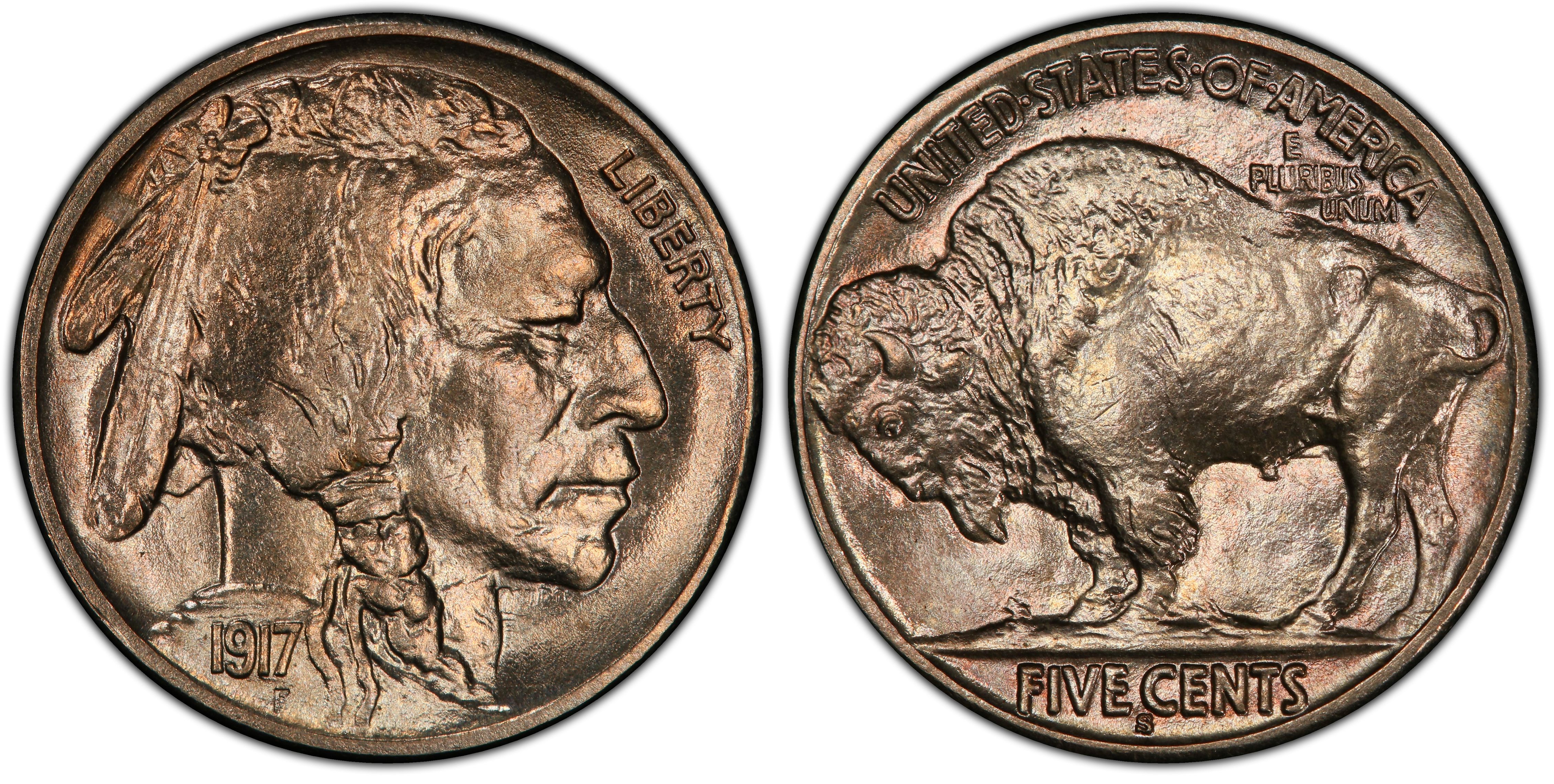1913 type 2 buffalo nickel with the "matte proof" line on the reverse die? What is it?
 BUFFNIXX
Posts: 2,735 ✭✭✭✭✭
BUFFNIXX
Posts: 2,735 ✭✭✭✭✭
Here is a nice pcgs ms66 1913 type two buffalo nickel which has that so-called "matte proof die line" on the reverse to the left
of the bison's face on the rim. What is the purpose of this line? Maybe just to note that the die is meant for proof coinage
initially? It appears on 1913 - 1915 type two proofs and some 1916 proofs and even a few 1917 dies. Anyway my question to
anyone who wants to chirp in is "exactly what does this line mean"?
Why is it there?



Collector of Buffalo Nickels and other 20th century United States Coinage
a.k.a "The BUFFINATOR"
a.k.a "The BUFFINATOR"
1
Comments
I suppose it is completely possible that the mint made a particular hub for proof coins only like they did for the Washington quarters in 1937. The only die marker could be the line.
This would need lots of research, but it's certainly possible.
I don’t think there was a purpose for it - it just happens to be present.
Mark Feld* of Heritage Auctions*Unless otherwise noted, my posts here represent my personal opinions.
perhaps a shared hub/die since there weren't that many produced? same for obverse, maybe? an undated obv hub produced undated obv working dies and then the dates punched in after?
it would KINDA seem like a waste to go through the expense of producing such great examples and only striking so few. the mint has done A LOT of weird "expensive" stuff over the centuries seemingly countermanding their own argument of efficiency and reducing expenses/costs but that is a topic for another thread/day.
here are some images, do what you will.
If the line is incuse, it's in the hub, therefore many working dies. I wouldn't attribute coins as matte proofs because of it. The OP coin is assuredly not a matte proof, nor do I think it was presented with hopes that it was.
Keeper of the VAM Catalog • Professional Coin Imaging • Prime Number Set • World Coins in Early America • British Trade Dollars • Variety Attribution
Why don't you buy it and see if it is there when it arrives? There are some sellers that seem to overlay proof pictures to give their coins more detail.
The edge of the coin shown is not squared off enough to be a proof, the Mint may have used a die intended for a proof but this coin shown does not match any of the examples of Proofs shown. a lot of 1915 coins show this also.
No idea about the line, but that is a very nice Buff.... buy it and research it further. Cheers, RickO
That line does not determine if a coin is proof or not. If you look you will see the same line on coins dated after 1916.

Collector, occasional seller
(and also on branch mint coins.)

Collector, occasional seller
I learned something today. Until today I always thought that this line only appeared on non-Type One Matte Proofs. Obviously that is not so.
Thank you for posting this.
TD
Where, in this thread, did you see the line on a Type One?
Mark Feld* of Heritage Auctions*Unless otherwise noted, my posts here represent my personal opinions.
I didn't. By "non-Type One" I meant the 1913 TYpe Two Matte Proof through the 1916 Matte Proof.
Sorry, I was focusing on the portion of your comment pertaining to the dates/types (One vs. Two) and overlooked the Proof vs. business strike part.
Mark Feld* of Heritage Auctions*Unless otherwise noted, my posts here represent my personal opinions.